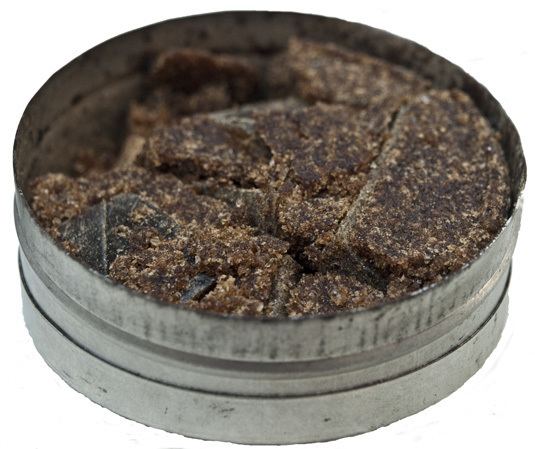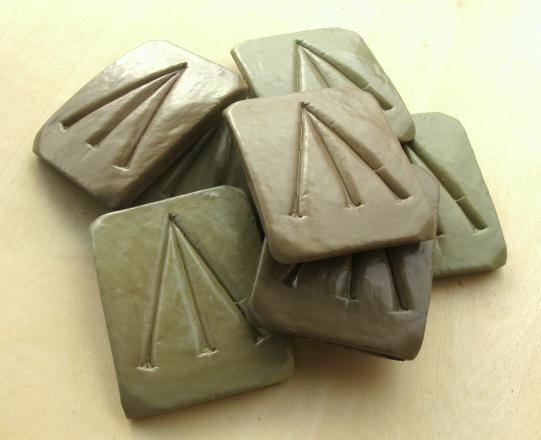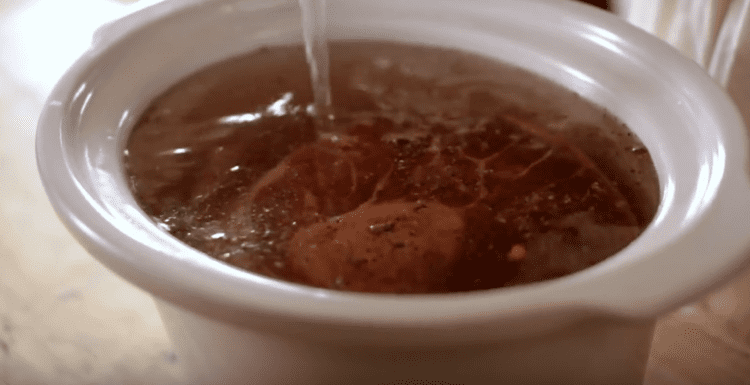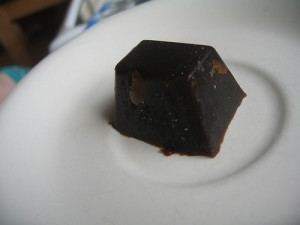Type Dehydrated food | ||
 | ||
Similar Sop, Pemmican, Bouillon, Mushroom ketchup, Scouse | ||
Easiest way to make portable soup
Portable soup was a kind of dehydrated food used in the 18th and 19th centuries. It was a precursor of the later meat extract and bouillon cubes, and of industrially dehydrated food. It is also known as pocket soup or veal glew. It is a cousin of the glace de viande of French cooking. It was long a staple of seamen and explorers, for it would keep for many months or even years. In this context, it was a filling and nutritious dish. Portable soup of less extended vintage was, according to the 1881 Household Cyclopedia,
Contents

...exceedingly convenient for private families, for by putting one of the cakes in a saucepan with about a quart of water, and a little salt, a basin of good broth may be made in a few minutes.

Making 18th century portable soup
Process
Soup was made in the usual way, reduced, degreased—or the fat would go rancid—and then reduced repeatedly until it took on the consistency of jelly. Once it was sufficiently gelatinous to hold its form, it was placed on pieces of flannel or unglazed earthenware dishes and rotated regularly to dry it further. This was a seasonal process attempted only in the winter when humidity was low. Once dry, it was wrapped in paper and stored in boxes.
History

Portable soup is generally held to have been invented by Mrs Dubois, a London tavern keeper who, with William Cookworthy, won a contract to manufacture it for the Royal Navy in 1756. It had, however, been described at a much earlier date. In the late sixteenth century, Sir Hugh Plat wrote, in his unpublished notes, of portable soup as a potential victual for the army and navy, describing it as meat broth boiled down to a thick and dry paste which he called "Gelly". Plat's basic recipe was to boil the feet or legs of beef cattle for a long time to make "a good broath" which was then strained and boiled down to "a strong & stiff gelly". This in turn was dried on clean cloths in a windy place out of the sun, cut with wire into pieces, powdered with flour to stop the pieces sticking, and stored in wooden boxes. Made in March, it would "keepe all the yeere". Alternatively, the dry jelly could be "stamped" into shape with a wooden die, like the "Genoa Paste" of quinces familiar to Plat and other cooks of the time. He instructed that no sugar or salt should be added to the jelly because such taste would be concentrated by the boiling process, although he speculated that saffron might add colour, and that rosewater could also be added at this stage. He wondered whether baked flour or grated bread could be incorporated to make the jelly "serve as bread and meate the better", and whether the addition of isinglass would make it stiffer. The jelly was variously described by Plat as a "Victual for Warr", "dry gelly carried to the sea", and a food for soldiers on the march. Plat envisaged using this jelly either as the base for soup, or "neat" as a concentrated food. Reconstitution as soup simply involved dissolving a piece of the jelly in hot water to make "good broath", and, because jelly and water alone would be rather bland, adding such flavourings as were available or to taste – sugar, salt, liquorice, aniseed, or other "convenient spice". Plat emphasised the utility of the jelly as field rations, for "a soldier may satisfie his hunger herwith, whilst hee is in his march". He recommended that a leg of beef or veal be boiled with every 6 or 8 neats' (cows') feet to produce a jelly which would more easily dissolve in the mouth.

The existence of portable soups (called "bouillons en tablettes" in French) is mentioned, in 1690, in Antoine Furetière's Dictionnaire universel, under the article Tablette: "On a veu des consommés reduits en tablettes, ou des bouillons à porter en poche." ("We have seen consommés reduced into tablets, or broth to carry in your pocket.")

Mrs Dubois was described as "a person of good character and circumstances". She operated from a tavern, at the Golden Head, in Three Kings Court in Fleet Street. She may have been the widow of a French chef and tavern keeper but by 1757 she had a new husband, Edward Bennet, son of a Sheffield knife-grinder. The contract with the navy was alluded to in advertising material long after it had lapsed, Benjamin Piper, successor in the business announced he was "Successor to Messieurs Bennet and Dubois, The original Portable Soup-Makers to His majesty’s Royal Navy" and one Vigor, successor to Piper, used the same rubric on his flyers. The naval authorities hoped that portable soup would prevent scurvy among their crews. They therefore allotted a daily ration to each sailor beginning in the 1750s. Captain Cook was convinced of its efficacy and carried it on both his South Seas voyages.
Lewis and Clark carried portable soup on their 1804–1806 expedition into the territory of the newly acquired Louisiana Purchase. According to his letter from Fredericktown, Ohio on April 15, 1803, Lewis purchased the soup from Francois Baillet, a cook in Philadelphia. He paid $289.50 for the 193 pounds of portable soup stored in "32 canisters". Lewis carried it with him overland to the embarkation point on the Ohio River.
However, by 1815, with the publication of physician Gilbert Blane's On the Comparative Health of the British Navy from 1779 to 1814, the efficacy of portable soup for promoting the health of sailors was found lacking. Opinion shifted in favor of canned meats, by a process invented in France in 1806.
A similar product, portable gelatin, was developed by American inventor Peter Cooper in 1845, as a staple meal or dessert for families.
